As soon as healthy new tomato plants appear in your spring vegetable garden, you’ll start imagining what the fall harvest will look like. Like any tomato grower, you might wonder: How many tomatoes can 1 plant produce?
On average, a tomato plant can yield 10 to 30 pounds of tomatoes. Depending on the size of the tomatoes, this can be roughly 20 to 90 tomatoes from a single plant. When grown in a square foot garden, each tomato plant can typically yield up to 20 pounds, depending on environmental factors.
When determining the yield of your tomato crop, there are many factors that play a role. The variety of tomato, is it determinate or indeterminate, the environment it’s growing in, and the care it receives will affect yield. Let’s look deeper into how you can estimate your tomato harvest.
How Many Pounds Does One Tomato Plant Produce?
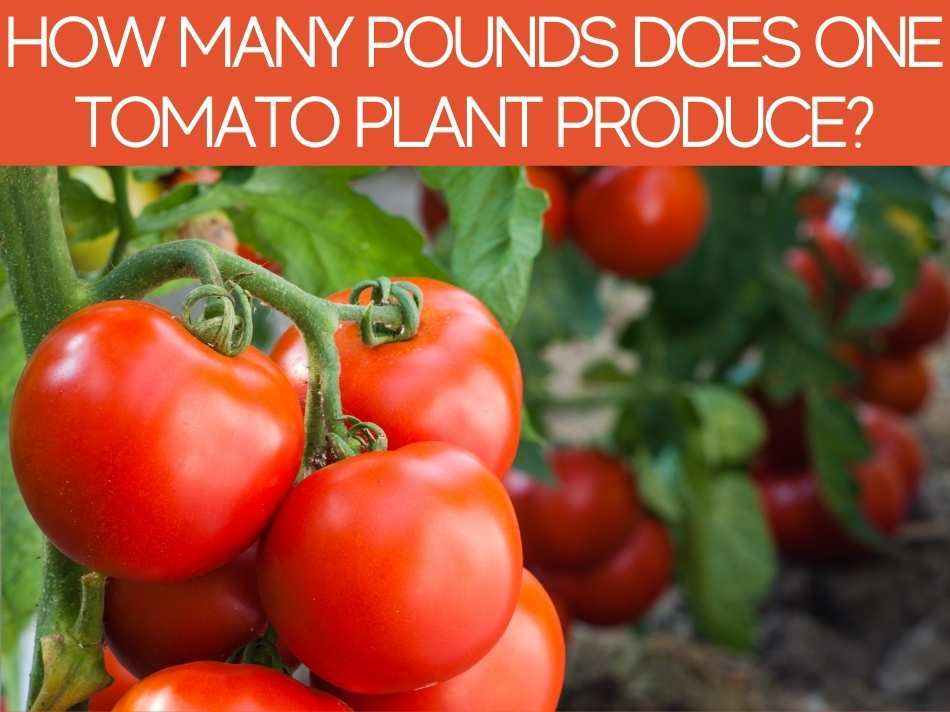
Different varieties of tomatoes yield differently.
Tomatoes grown for commercial production are given the best environment and fertilization.
They often produce much more than the plants grown in a home garden.
The type of tomatoes you grow will also determine the kind of yield you can expect from your crop.
Determinate vs. Indeterminate Tomatoes
A significant factor that affects the yield of your tomato crop is whether you’re growing determinate or indeterminate varieties.
A determinate tomato variety trial in 2011 tested 6 new varieties for their yield when grown in a heated greenhouse.
The results produced an average yield between 20 to 27 pounds for the 6 varieties and a mean number of tomato fruits per plant between 55 to 62.
The above example gives you an idea of the kind of yield you can expect when growing determinate tomatoes.
In determinate tomato plants, flowers are set at the growing tips that stop further growth and set fruit that all come to harvest simultaneously.
Since the flower set stops the stems’ further growth, which could have yielded more tomatoes, the yield is generally lower for determinate tomatoes.
Once the fruit is set, and the plant has stopped attaining height, you can count the number of fruits to figure out how many tomatoes you’ll get out of it, and that’s it.
There will be no more tomatoes from this plant – just the ones you have counted.
The harvest season is limited to a few weeks.
It is preferred by gardeners who want all their tomatoes harvested at once instead of continual harvest spread through months.
Indeterminate tomatoes are known to produce larger yields since they continue flowering and fruiting until frost kills the plant.
The flower clusters aren’t set on the terminal points on an indeterminate tomato plant, so the plant continues growing and setting new flowers and fruits until fall.
Of course, the fruits that are set around the end of summer or the beginning of fall are likely not going to ripen.
However, indeterminate varieties will still yield more than determinate varieties since the growing season is much longer.
How Many Kilograms Does A Tomato Plant Produce?
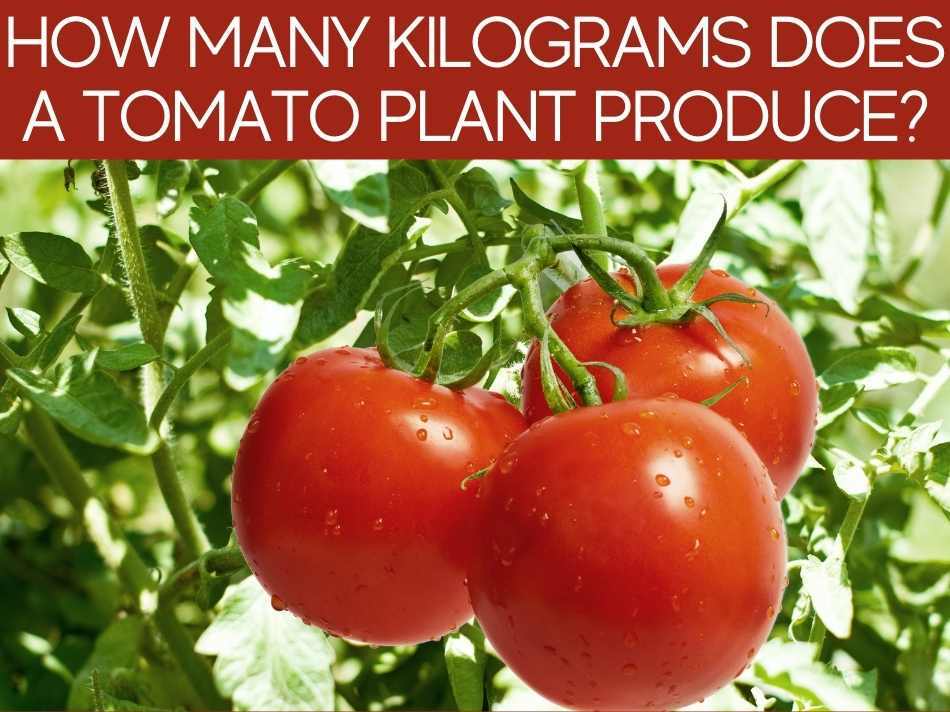
Again, it’s easy to determine the yield on a determinate tomato plant since you’ll just need to count the fruits.
Generally, determinate tomatoes yield around 9 to 12 kg of tomatoes on each plant.
An indeterminate tomato isn’t as predictable, but you can expect it to produce much more.
The two types of tomatoes aren’t the only factors that affect the yield, though.
The kind of support you give the plant will also have a say in deciding your crop yield.
Tomato plants are top-heavy and need support to keep them off the ground, prevent soil-borne diseases, and ensure that all the parts are getting ample sunlight.
A tomato plant supported by a stake yields 3.6 kg fruit on average for each plant, while those trained through trellises can yield between 5.5 to 9 kg of fruit on each vine.
A study by a greenhouse manufacturing company estimated 13.5 kg as the worst expected yield per plant space and 21 – 23 kg per plant as its yield in the best case scenario.
A survey of the industry indicated an average yield of around 9 to 14.5 kg per plant.
Across the south-central US, the average yield is around 7 to 14 kg per plant.
How Many Tomatoes Can You Get From One Plant?
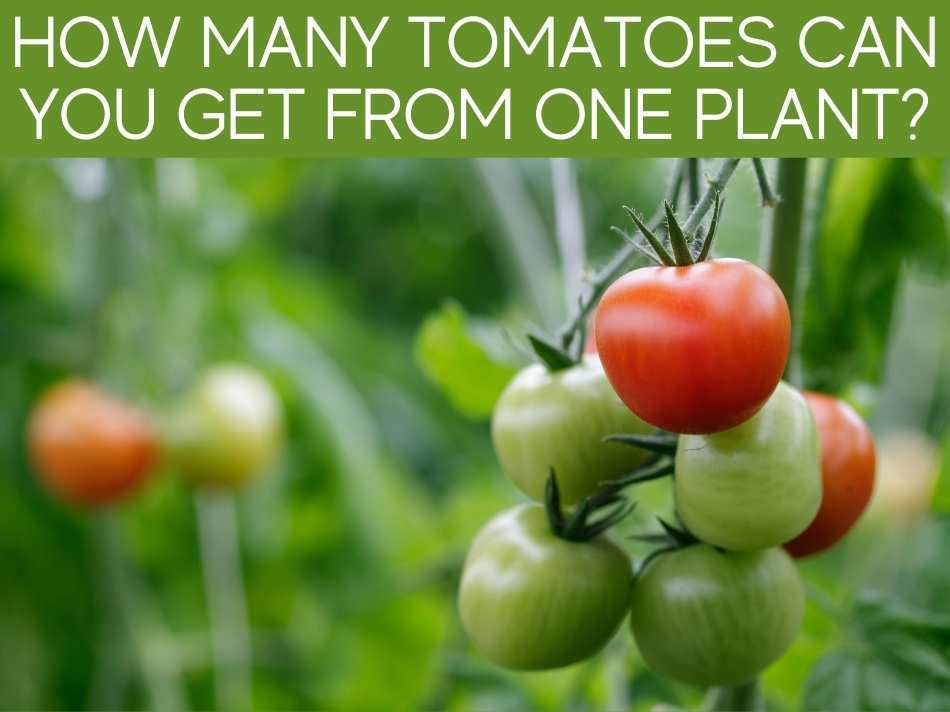
As already highlighted, the specific cultivar you’re growing, the environmental conditions, and the level of care you give your tomato plants will all contribute to the yield you can expect from your tomato crop.
If you plant a good variety, give it the best conditions and optimal care, a single plant can yield up to 20 to 90 tomatoes on average.
So, on the low end, how many tomatoes should you get from one plant?
Probably about 20 tomatoes, at least.
The size and even the number of tomatoes vary substantially between varieties.
Best High-Yielding Tomato Varieties
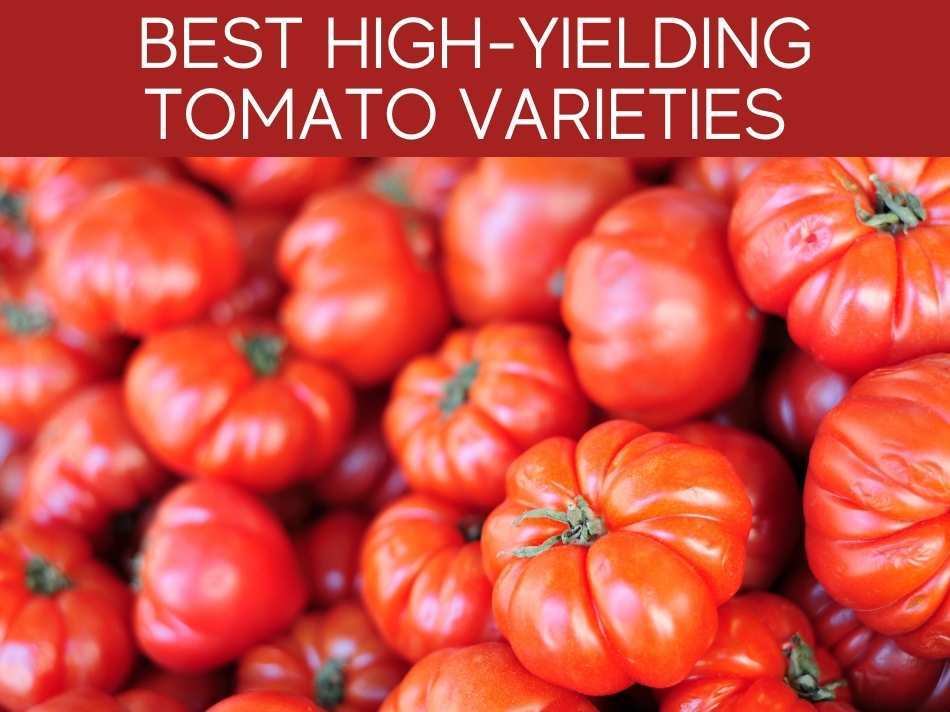
Some are high-yielding varieties, bred over the years to produce more than others, provided they’re given the best conditions to grow.
Here are some tomato varieties you can get the most out of:
1. Roma Tomatoes
Roma tomatoes are one of the highest-yielding varieties that bloom abundantly, producing up to 15 cherry tomatoes in each cluster, amounting to an average of 200 tomatoes on a single plant.
It’s a disease-resistant determinate plant that produces a harvest that’s perfect for salads, stews, and sauces.
The tomatoes have a unique egg-like shape that grows to about 3 inches in length with smooth thick skin and meaty flesh with very few seeds.
2. Beefsteak Tomato
Beefsteak tomatoes are a popular choice among tomato growers for their large, juicy fruits, perfect for burgers, steaks, and sandwiches.
Each fruit can weigh up to 2 pounds!
From heirloom beefsteak to hybrids, there are tons of varieties of beefsteak to choose from.
Better Boy is a common beefsteak variety planted in home gardens and is treasured for its high yield.
A Guinness World Record holding tomato plant was a Better Boy variety and yielded 340 pounds (154 kg) of tomatoes!
3. Grape Tomato
Grape tomato is another excellent variety that produces a hefty harvest with oblong tomatoes perfect for snacking.
Though they aren’t as sweet as cherry tomatoes, they’re perfect for salads and bear several fruits on each plant.
There are many cultivars of grape tomatoes, and they can be either determinate or indeterminate.
4. San Marzano
San Marzano produces a big crop of long, pointed tomatoes with a bright red thick skin and few seeds.
The fruit is less acidic and sweeter than an average tomato and works perfectly for pizza, pasta, and sauces.
The fruit is set in clusters of 6 to 8, with each fruit weighing 4 to 6 ounces on average.
It takes about 80 days to grow to maturity from the time of planting the seeds.
Indeterminate San Marzano plants continue growing and bearing fruit until cold weather stops growth, while there are also determinate varieties that produce shorter, bushier plants with smaller yields.
5. Cherry Tomato
Cherry tomatoes are a garden favorite for their delightful miniature fruits, perfect for eating right off the vines.
They grow exceptionally well in small gardens and even produce a good crop in containers and hanging baskets.
There are tons of determinate and indeterminate cherry tomatoes to grow, with some yielding hundreds of mini tomatoes per plant through the growing season.
Baby Boomer is a hybrid cherry tomato that can produce over 300 one-inch bright red tomatoes on each plant.
How Many Tomatoes Does One Plant Yield?
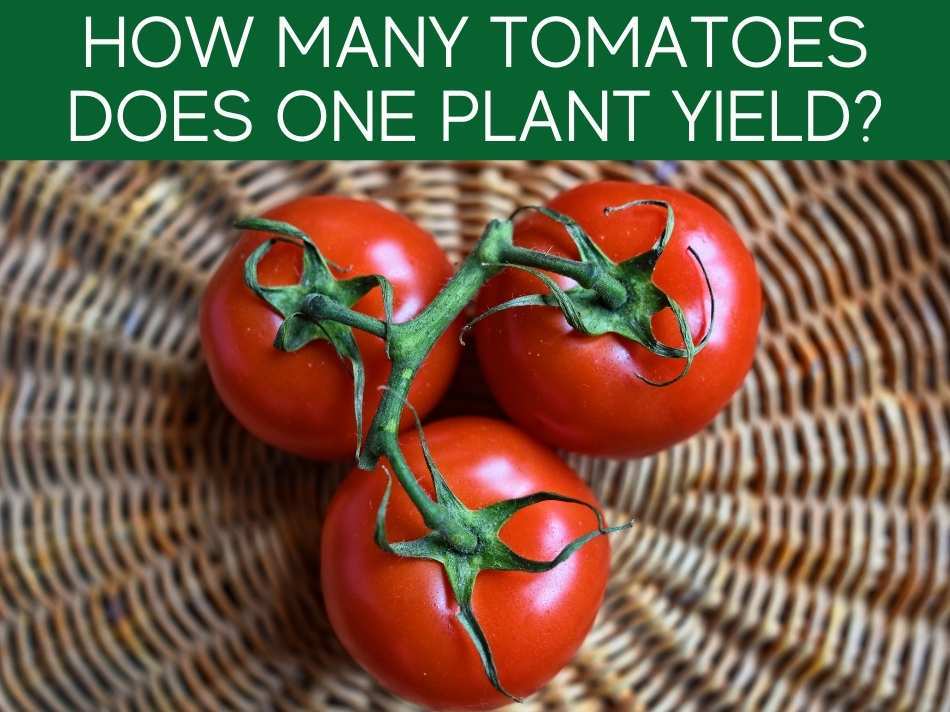
A thriving tomato crop should be enough to feed the family for a couple of months at least.
If you can’t consume the entire batch at once, save some for the winters in the form of tomato puree or sauce.
Tomato puree can last up to a week in the fridge, while it can be used for over 6 months if frozen.
So if you’re planning on a big harvest that lasts you for months without finding the need to visit the grocery store or the farmer’s market, you’ll want to know how many tomatoes does one plant yield.
Only then can you estimate the number of tomato plants you’ll want in your self-sustenance garden.
So how many red, juicy fruits can you get out of a single plant?
A healthy crop can deliver anywhere between 20 to 90 tomatoes per plant as long as you give it the care it asks for.
If you talk about the weight, each plant can yield up to 10 to 15 pounds at least, preferably more if you take good care of the crop and the climatic conditions are just as suitable.
How To Increase The Yield Of Your Tomato Crop?
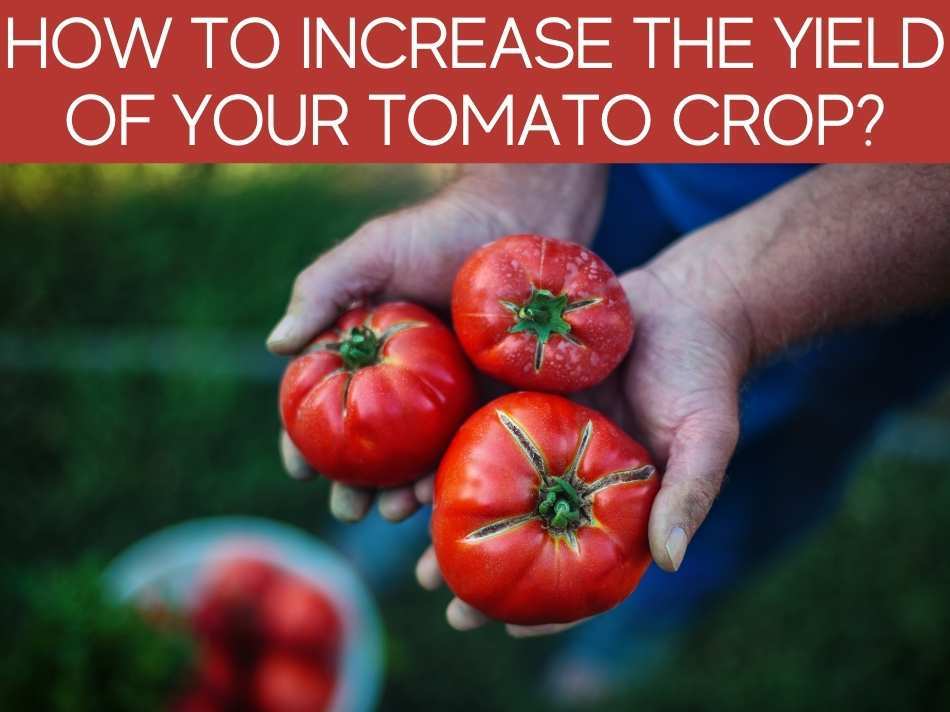
All tomato growers have the same goal in mind – bigger and better yield.
So what can you do to make sure this year’s yield beats the last one?
Below is a quick summary, but you’ll also want to check out our complete guide for how to grow more tomatoes.
Here are some foolproof tips to help your tomato plants thrive and increase the number of tomatoes they produce:
1. Start With The Best Plants
The first step to a hefty crop is to start off with the strongest plants.
Choose disease-resistant, high-yielding varieties to grow.
Some gardeners choose to grow from seeds since many varieties aren’t available as seedlings at the nursery.
Growing your own seedlings gives you the chance to explore new varieties.
If you plan to grow from seedlings, choose the best plants from the nursery.
Look for small, healthy-looking plants, about 4 to 6 inches tall, with at least a few healthy leaves.
Smaller plants respond better to transplanting as compared to bigger ones.
2. Optimal Growing Conditions
Though tomatoes are one of the most common vegetables, they have several requirements which will need to be fulfilled if you want to see vines laden with bright red fruits.
Choose a bright spot for your tomato garden, one that receives at least 6 to 8 hours of full sunlight. The soil should be well-drained and fertile with a slightly acidic pH (6.2 to 6.8).
3. Allow Room To Grow
If tomato plants aren’t producing to their full potential, one reason may be lack of space.
Make sure there’s the optimal spacing between the plants, 18” to 36” apart in rows with 48” to 60” between rows.
Ample spacing will ensure there’s enough air circulation between the plants to prevent fungal diseases and they have enough space to spread out.
4. Feed Regularly
Tomatoes are heavy feeders, so they’ll need regular fertilization.
However, if you give them too much nitrogen, the foliage growth will increase, and the number of fruits will drop.
How Much Does One Tomato Plant Yield?
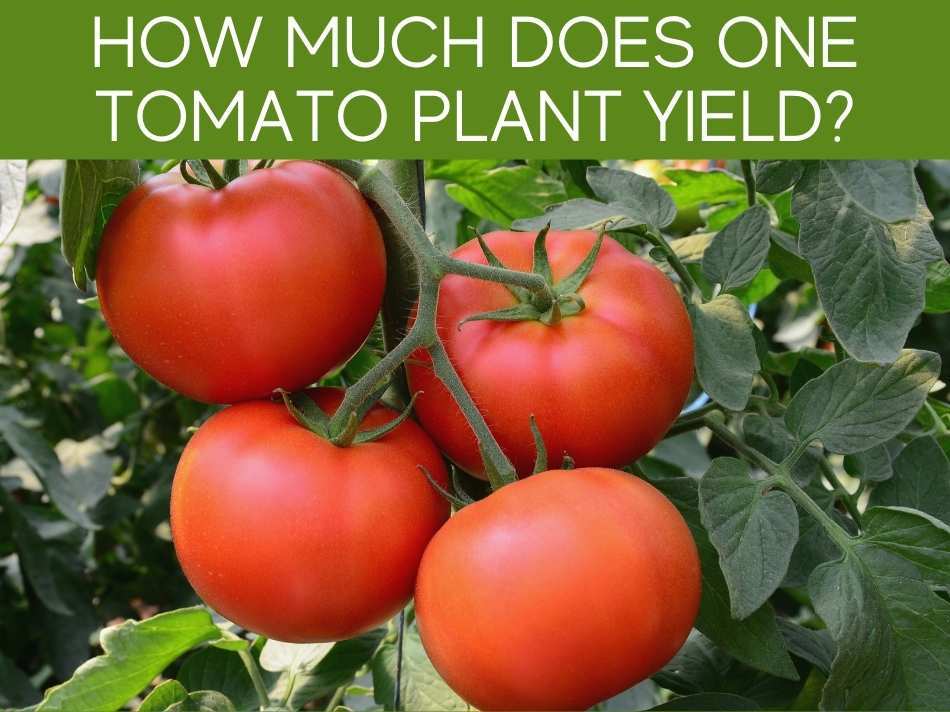
If you follow all the tips highlighted above, you can easily pull out 20 to 90 tomatoes from each of your tomato plants in a season.
However, tomato crops in different regions may perform slightly differently.
The yield may also differ between two plants in the same field.
One might, for example, be receiving better exposure to sunlight or better access to nutrients than others.
Also, the yield you get from tomato plants also depends on how long they grow.
In colder climates, which have shorter growing seasons, your tomato plants won’t produce as many tomatoes.
Environmental Factors
Let’s look at some of the environmental factors that are in play in a tomato field.
● Soil
Different regions have different kinds of soils.
Tomatoes won’t grow well in heavy clay or sandy soil. Amend it with plenty of compost and organic matter to improve the soil structure.
Also, we’ve got a complete guide for what type of soil is best for tomatoes.
● Climate
Tomatoes grow best in warmer climates.
Tomato plants in cooler regions may not yield a bumper harvest like the ones growing in the warmer zones.
In cooler zones, growers can either grow tomatoes in greenhouses or choose varieties with shorter growing seasons and start the seeds indoors to extend the growing season.
● Sunlight
The amount of sunlight is important too.
Tomatoes grown in a shady spot won’t produce as many tomatoes as they would in a sunny location.
And if you’re just starting out with tomatoes, you’ll want to see how much sun tomato seedlings need.
● Temperature Changes
Once the tomato plants bear flowers, they will need to be pollinated within two days, or they’ll abort and won’t be viable anymore.
Any extreme temperature changes during this period will severely affect the yield, whether it’s a temperature rise or drop.
Once you’ve chosen the correct date for planting tomatoes and have tended them well, just pray for the weather to be gentle on them once the flowers appear.
● Diseases
One of the popular factors that sabotage a beautiful tomato crop are diseases.
Fungal diseases, like grey leaf spot, inhibit the plant’s ability to take up water and nutrients.
Their growth will be stunted, and the yield will be very low than what you had in mind.
The tobacco mosaic virus attacks the fruit directly, again diminishing the yield.
Certain environmental conditions like excessive rainfall, drought, or extreme temperature changes can cause physiological disorders in the plant, ultimately affecting yield.
How Many Tomatoes Will A San Marzano Plant Produce?
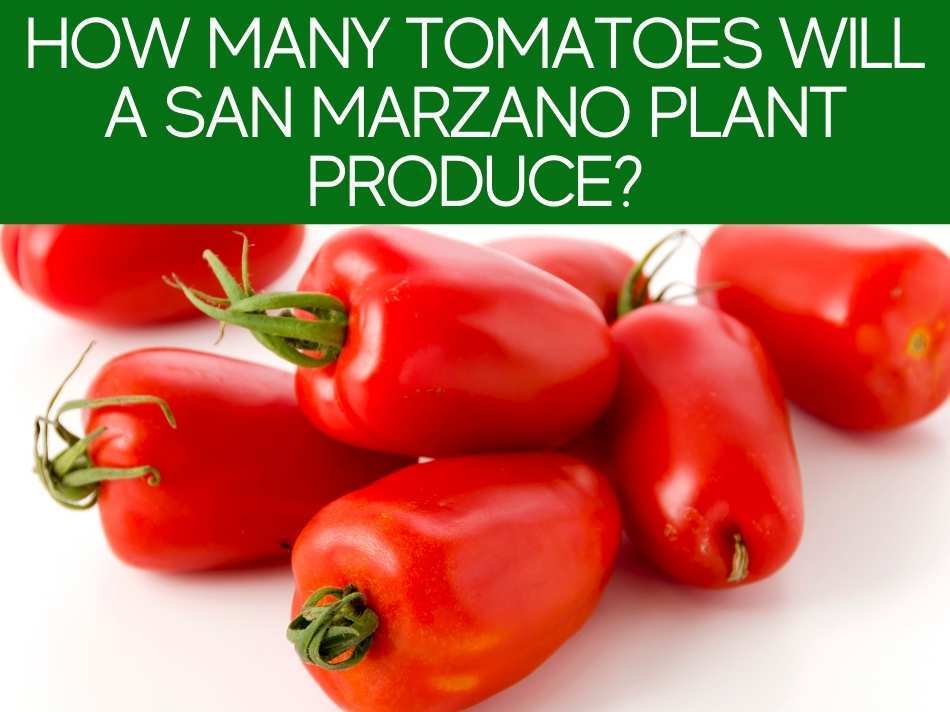
San Marzano is a high-yielding tomato variety, popular worldwide for its stronger, sweeter taste and thick flesh.
They’re the best choices for pasta and pizza sauces but also work great in salads, sandwiches, and other dishes.
When given the right conditions, plants grow to about 5 to 6 feet tall, delivering a bountiful harvest.
The fruits are oval in shape, typically reaching about 1 to 3 inches in length and weighing up to 3 ounces.
Under the best conditions, you can expect over 20 pounds of tomatoes per plant.
Since each tomato weighs up to 3 ounces, this amounts to around 100 tomatoes from a single San Marzano plant.
Why Is Pruning Important?
Whether you’re growing San Marzano or any other tomato variety, pruning is important for the plants that are developing heavy foliage.
Without pruning, you may get more tomatoes, but the size will be smaller.
Pruning out some of the unnecessary foliage will allow the plants to concentrate more energy on developing fruits rather than green growth.
However, over-pruning isn’t good either.
Leave ample foliage on the plants so it can shelter the developing fruits and protect them against sunscald.
How Many Years Will A Tomato Plant Produce?
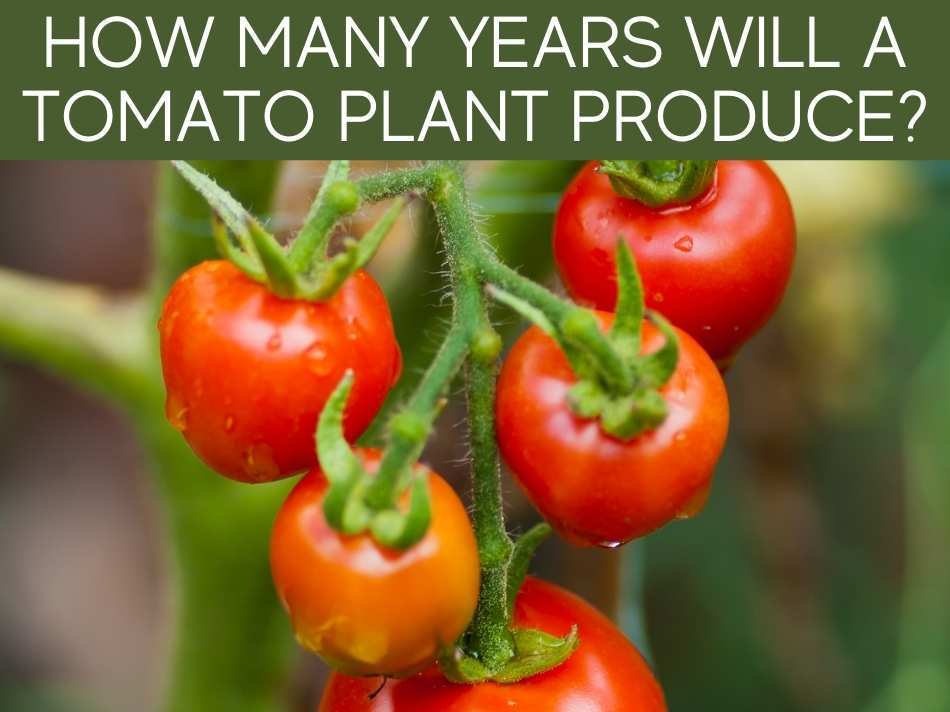
In most gardens, tomato plants will only live for a single year and are planted as annual vegetables.
As soon as cold weather approaches and the plant sees one or two frosts, it will die.
You will need to uproot it and start over next season with a new set of seeds or seedlings.
However, in zones where the temperature does not fall below 60°F or if you’re growing tomatoes indoors, tomatoes are short-lived perennials that can survive two or more years.
However, during the third year of growth and beyond, the plants will stop producing viable fruits.
You’ll want to check out the full article for info (and tips) on how long tomato plants will produce.
How Many Tomato Plants Do I Need For A Family Of 5?
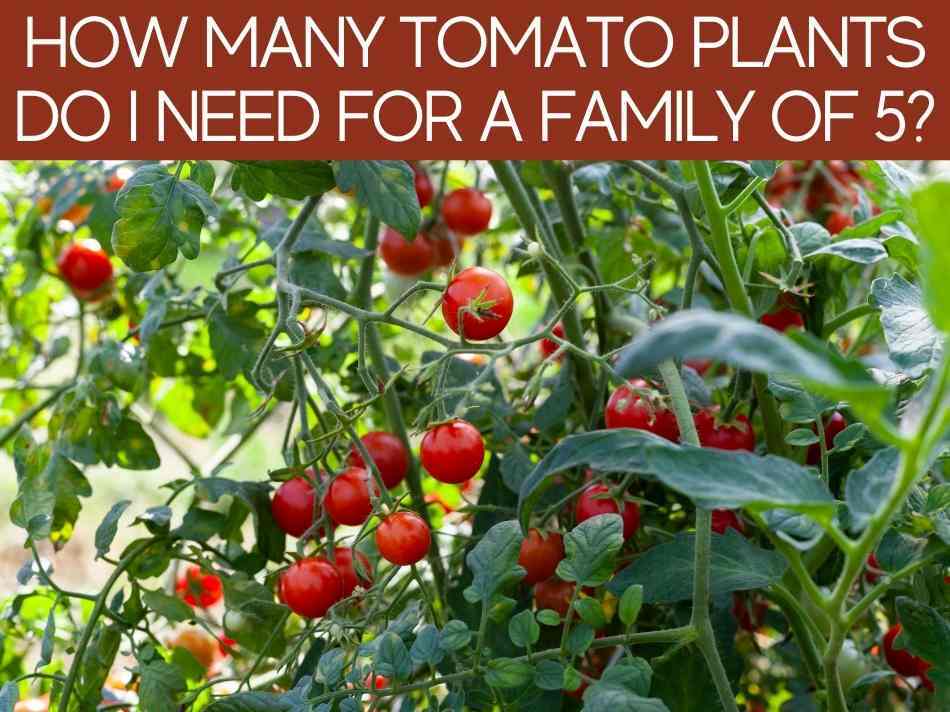
Organic tomatoes are expensive to buy at the farmer’s market.
If you’re growing them at home, why not plant enough to last the family through the harvest season at least.
If you plan on eating fresh, estimate around 1 plant per person in the case of cherry tomatoes and 2 to 4 plants per person for slicing tomatoes.
This amounts to around 5 cherry tomato plants for a family of 5 or 20 slicing tomato plants for the same family size.
However, if you’re planning on storing sauces or salsa for use throughout the rest of the year, you’ll have to plant much more.
If you plan on preserving 24 quarts each of pizza sauce, marinara sauce, and salsa, that amounts to 72 quarts of tomatoes in total.
And since each quart comes from about 3 pounds of fresh tomatoes, you’ll need around 216 pounds of tomatoes.
If you estimate an average yield of 15 pounds per plant, you’ll need at least 14 tomato plants in your garden to cover a medium-sized family’s requirements for the year.
Likewise, for a family of 4, you’ll need roughly 3 tomato plants per person, or 12 tomato plants total.
Conclusion
Now that you know how many tomatoes can 1 plant produce and the number of plants you’ll need in your sustenance garden, you’re ready to start planting!
Follow all the tips to fill up baskets of fresh tomatoes to go in the pantry and last you months beyond the harvest season!
